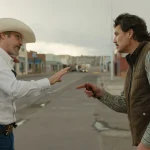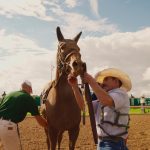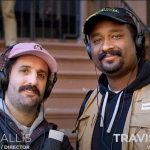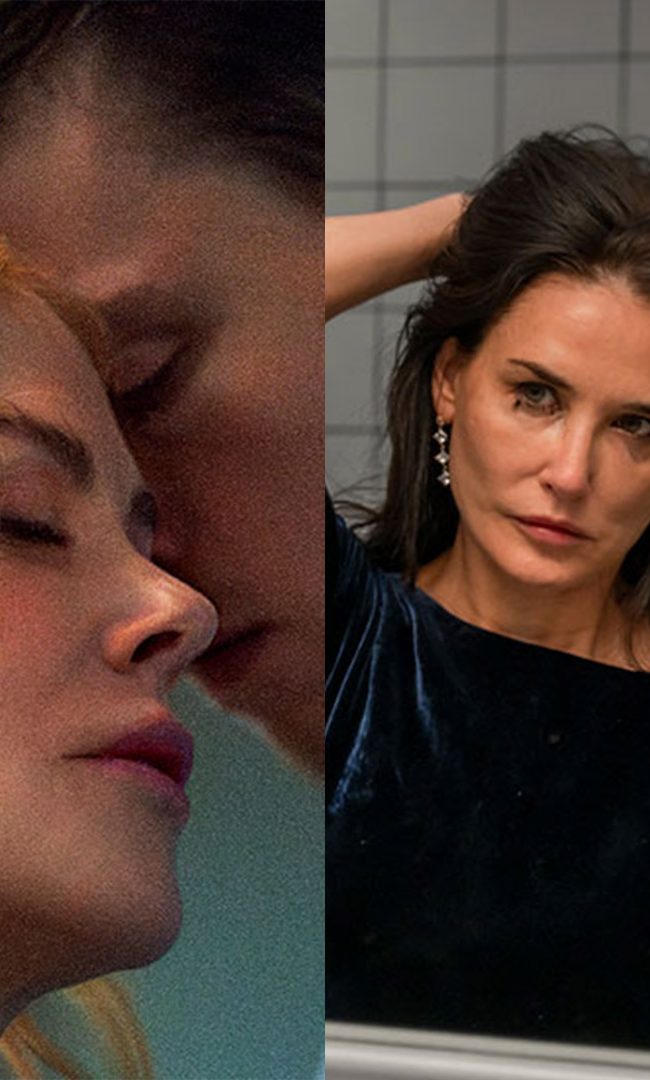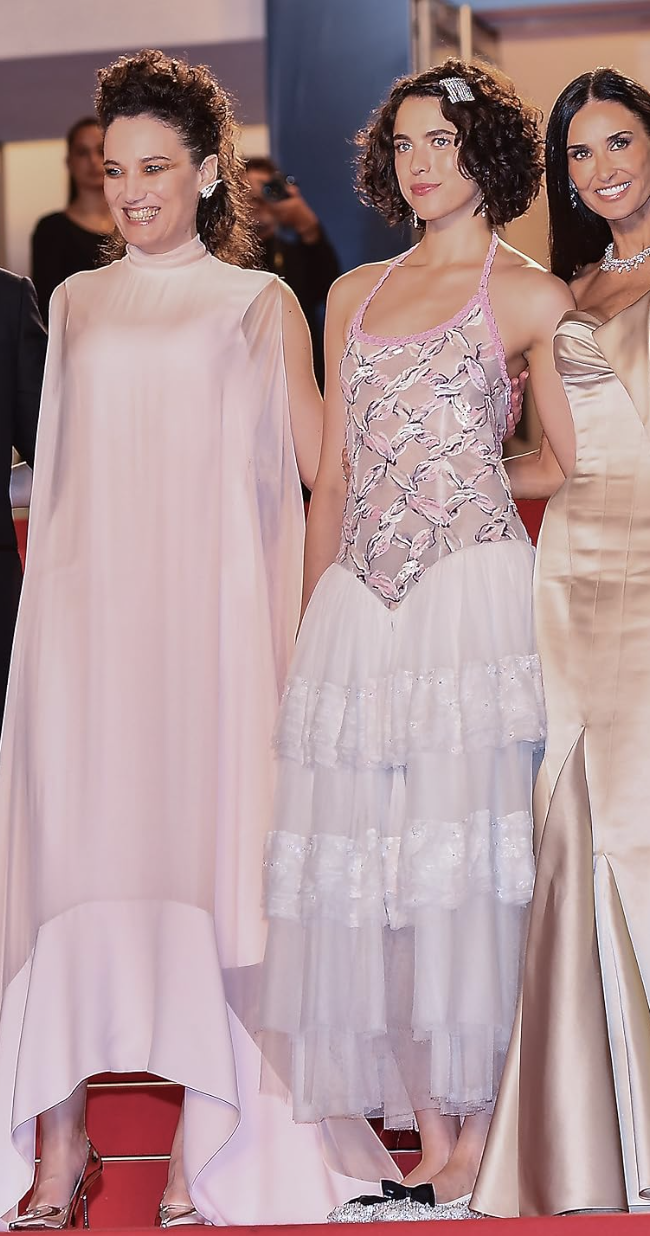A Conversation with Zachary Wigon (SANCTUARY)
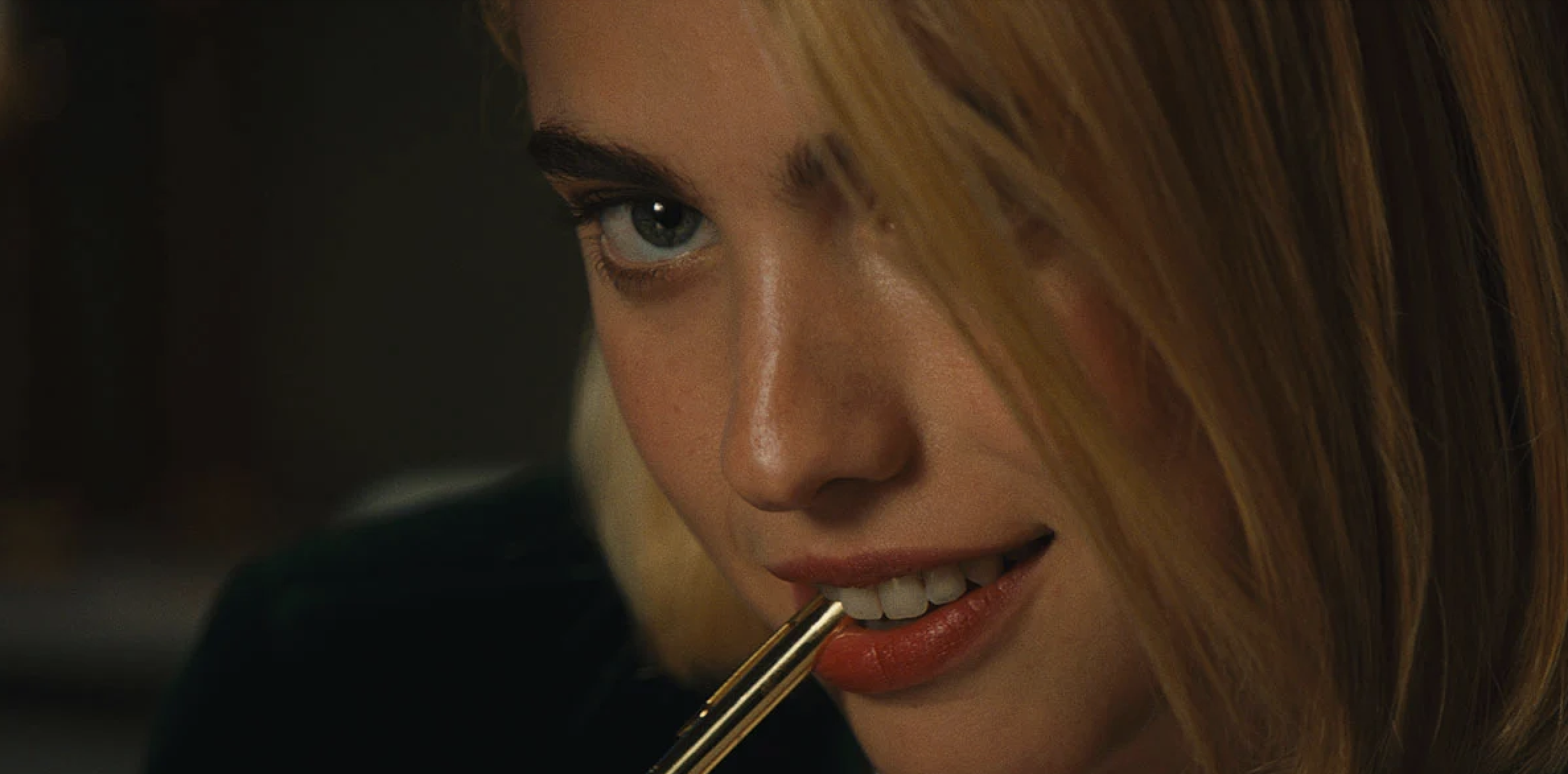
Zachary Wigon is in his mid 30s and has lived in New York his entire life. He graduated from Tisch School of Arts. He has been working in the industry for quite some time, his feature debut, which he wrote and directed, titled The Heart Machine came out in 2014. In his latest feature, he finds himself teaming up with Homecoming screenwriter Micah Bloomberg, and superstar actors Margaret Qualley and Christopher Abbott. The film, titled Sanctuary, takes place in one location and was shot over 18 days. Wigon directs this hilarious, genre bending picture with skill and passion. The following conversation was edited for length and clarity.
Hammer To Nail: Thank you so much for taking the time to speak with me today, I loved Sanctuary! It has been almost a decade since your debut feature The Heart Machine. What was it about this script and this opportunity that brought you back to the directing chair?
Zachary Wigon: So, this was a script that I developed with the writer, Micah Bloomberg, who did such a terrific job. What captivated me about this idea was the paradox at the center of it. You have people who are living false versions of themselves in real life and are able to be their real selves in unreal life, in the fantasy space. That paradox was fascinating to me. I just felt like you could dive deeper and deeper into that and never hit the bottom. I am interested in making things that go deep into human psychology. The depths of the unconscious is what is most interesting to me in cinema.
HTN: You were not credited for the screenplay in the film or on IMDB. What was the collaboration with Micah like?
ZW: Micah and I started talking about it early on. We decided to develop something and the plan was always he would write it and I would direct it. We got on the phone and basically hashed out what the broad strokes of the story would be. He then went off and started writing the script. He would do it one sequence at a time. I would get 10-15 pages, I would notate the pages and then we would get on the phone and talk about it. He would then send another draft and that was how we did the script.
HTN: When did Margaret Qualley and Christopher Abbott get involved? Were they always the thought for the two roles? How did that collaboration happen?
ZW: In general, I do not think about an actor in the script development process. At that point you are still trying to get a sense of who exactly the character is. Once the script was done then I thought that Maragaret and Chris would be absolutely perfect for this. Margaret was the first one that I spoke to. We met two years ago. We had a great conversation and she joined the team. Chris and I met a week or two later. It was very fast.
HTN: They are some of the most talented actors working in the industry today. What was it like working with them?
ZW: I agree with you. They are definitely as talented as anyone working today. It was a blast and a thrill. What was amazing about it was, I remember being in an uber on the way to the set every morning, and I would be looking over the pages of what we were going to shoot, I would always think to myself, “what are they going to do today that will completely surprise me but also be completely true to the character.” That is what was so amazing. When you are working with really exceptionally talented actors, You just do not have to do a whole lot. It is kinda like if you have a great basketball team and you are the coach you have to just let them go on the court and do their thing. That is basically my attitude towards working with actors. You might talk a little bit beforehand about the characters and the story but essentially I am just trying to create a space where they can access their own inner creativity and allow them to experiment. They went out on a limb time and time again. They tried all these fascinating ideas that really landed and resonated.
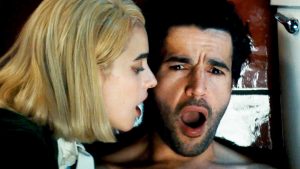
A still from SANCTUARY
HTN: The dialogue is amazing in the film, it feels like the script was followed to a tee. You can feel that it is very written, however, working with such big and talented actors like Margaret and Chris, I was wondering if you are leaving room for improvisation and if so did any Improv make it into the film?
ZW: There was no improv. We all were really so happy with the script. They basically learned the script like it was a play. It would have been tough to do it any other way because we only had 18 days to shoot the movie. We were executing huge chunks of text at a time. The dinner scene for example, that was 13 pages and we shot it all in one day. We had two cameras that day and we did 6.5 pages at a time. It is basically like shooting a mini one act play.
HTN: The film takes place all in one location, obviously when making a one location film that location is very important. Talk about the process of finding that location, and what were some things you were looking for?
ZW: We actually built it. In terms of coming up with the visual idea, there are a lot of contemporary hotel rooms that are floor to ceiling glass, everything is very simple and minimalist. I felt like it needed to be very different. It needed to be visually busy. If you are going to be in this space for 90 minutes, you do not want it to be a situation where your eye gets very tired. You want your eye to be constantly looking at new details and being stimulated in new ways.
With that in mind, I was thinking about this hotel called the Kit Kemp. The decor there is very busy in an interesting way. That was one point of reference. I knew that I wanted it to be jewel tones. That, to me, spoke to the atmospheric feel of the movie. That was the starting point, and Jason Singleton, with the whole team, did a phenomenal job of figuring out how to make something that was going to be visually interesting but not so busy that it was too much for the eye to handle. The art crew on this was terrific. They put it all together and I was very pleased with how it turned out
HTN: It came out great. I’d like to talk about the anatomy of that opening shot in which you frame Abbot’s character and his facial expression so perfectly. What was the thinking behind it and how did you execute it?
ZW: I thought about that shot on and off for like a year. It took a while to land on it because it is always hard to come up with a shot when there is not a lot happening action wise. If a lot is happening action wise it kinda tells you what you want to do. At this moment, it is just a guy on a bed looking at a watch. You could do it a million different ways. There were a couple of things I wanted to show.
I wanted to tell the viewer that the watch was important because that is really how the story starts. I also wanted to orient the viewer to the world in a way that would make it feel far away. I wanted to give a sense of the room we were in. I always wanted to introduce him upside down or sideways. I had a lot of different versions of this shot but landed on this one because it was a little simpler. I wanted him to be introduced upside down because, emotionally, he is upside down. He is about to end this relationship that has been very meaningful to him. On a deep level he does not want to end it, but he feels like he has to. The phone then rings and that is what calls him back to reality. The way we did it was pretty straight forward. We had a remote head on a jib arm. The jib moving was what allowed us to start in Chris’ POV and then move out.
HTN: It was great, I love that shot a lot. When editing the film, was the theatrical experience something you guys considered via theater tests etc? Did it ever cross your mind to make a film that could work on both the small and big screen?
ZW: I was always hoping it would get a theatrical release. You always want the biggest canvas. It is all about image and sound, so you want the largest screen for your image, you want the best sound system. There is a lot of sound design work I did with Craig Mann and I do not think you are going to fully get what is going on sound design wise if you are watching it on tv because of the way sound gets compressed. It is definitely better to hear it in 5.1. It is like you get more colors for your paint brush. There is just more texture that can be presented.
HTN: The film has a wild tone, it is dabbling in lots of different genres. Prior to directing the film, did you watch any films in preparation as you tried to stick the landing on this interesting tone?
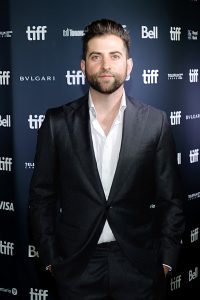
Filmmaker Zachary Wigon
ZW: Honestly, in terms of watching films for preparation, the script was so unique and had so much going for it, it was not necessary. I would imagine it makes sense to watch other movies of the same genre, but this was always so genre bending and unique that it was less about watching other films. The one thing I thought about genre wise was screwball comedies. Bringing up Baby is one of my favorites. I also really love psychological or erotic thrillers, Eyes Wide Shut, being the best example. One thing that was occurring to me was that there is some sort of weird tunnel between those genres. They seem so separate but in screwball comedies, people treat each other quite terribly. They do a lot of really messed up stuff to each other. In erotic thrillers, often there is a lot of stuff that is quite funny. I was thinking in a genre sense, “wouldn’t it be interesting if we made a movie that existed in the tunnel between those genres.”
HTN: That is really cool. I feel like the lighting in this film is really essential. talk about that lighting process and what you were trying to communicate with these studio lights.
ZW: Ludovica Isidori who shot the film did a phenomenal job. She is wonderfully talented. With Ludo my conversations were really about mood. The way in which the movie bounces from different tones, whether that is suspense, comedy, romance etc and simultaneously plunges deeper into the characters heads, was something we spoke about. I wanted the visuals to veer into these different tones but also turn more into a fantasy the further we go. She was really able to capture that in how she lit it.
HTN: What was it like working with NEON on the film? How did they come into the fold?
ZW: They bought the movie after it was finished at TIFF. Obviously they are one of the great distributors working and it has been a great honor to be able to have a movie come out in their world. They have all kinds of inventive ideas about marketing and interactive experiences. I think they did great work with the trailer and the poster. I am a huge fan of the company so it has been a real validation and a thrill.
HTN: It was a really good marketing campaign, it really got me excited about the movie. That is all the time I have, it was a pleasure to speak with you.
ZW: Thanks Jack, I appreciate it.
– Jack Schenker (@YUNGOCUPOTIS)
Neon; Zachary Wigon; Sanctuary movie review

